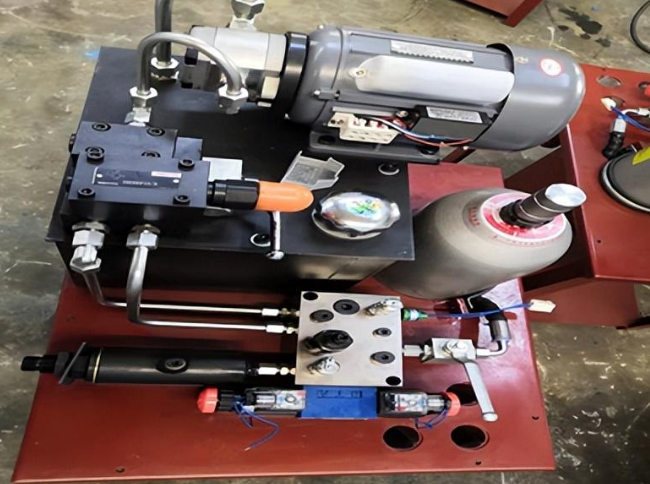Principle of elevator hydraulic system:
With the development of modern industry, hydraulic transmission has been applied more and more. Hydraulic transmission is a modern technology compared with mechanical transmission. The early hydraulic transmission uses water as the transmission medium. The warehouse hydraulic lift transmission in modern times is pushed by the booming petroleum industry in modern times.
A lift device consists of a walking mechanism, a hydraulic mechanism, an electric control mechanism and a supporting mechanism. Hydraulic oil made certain pressure vane pump, the oil filter, flameproof electromagnetic directional valve, throttle valve, hydraulic control one-way valve, balance valve into the lower cylinder, the hydraulic cylinder piston upward movement, improve the weight, the upper cylinder oil return by the flameproof electromagnetic directional valve back to the fuel tank, the rated pressure through the overflow valve adjustment, observing the pressure gauge pressure gauge reading values.
 Lift hydraulic station is a hydraulic station, typically in the hydraulic system operation, operation, need to pay extra attention to the. Here are two things to keep in mind:
Lift hydraulic station is a hydraulic station, typically in the hydraulic system operation, operation, need to pay extra attention to the. Here are two things to keep in mind:
1, lift hydraulic station in the process of system operation installation and debugging, should avoid rough, otherwise it will produce impact load, on the one hand will make mechanical structural parts early wear, fracture, breakage, on the other hand, the hydraulic pump station in the impact pressure, The impact pressure will damage the hydraulic components, the premature failure of the pressure joint between the oil seal and the high-pressure tubing joint and the rubber hose oil leakage or pipe explosion, and the frequent action of the relief valve, the oil temperature rises;
2, lift hydraulic station loaded goods to uniform, lift in the operation, must pay attention to the placement of goods. Some lift cargo weight in the rated load range, but the goods are placed on one side or a corner; such a lift and overload load is the same, especially aluminum alloy-type lift; be sure to center your cargo evenly or as much as possible.
For the elevator, the use of hydraulic transmission, its advantages mainly have the following aspects:
1. Hydraulic devices can produce more power than electrical devices at the same volume. Under the same power, the volume and mass of hydraulic device is tiny, its power density is large, and the structure is compact.
2. The hydraulic device works smoothly. Because of the tiny mass and inertia, quick response, hydraulic devices are easy to achieve rapid starting, braking and frequent reversing.
3. The hydraulic device can realize stepless speed regulation in a wide range, and it can also speed regulation in the process of operation.
4. Hydraulic transmission is easy to adjust or control the liquid pressure, flow rate or flow direction. Hydraulic cylinders, especially in extreme automation occasions, when hydraulic control and electrical control, electronic control or pneumatic control combined with the use of the whole transmission device can achieve extremely complex sequential action, can also be convenient to achieve remote control and automation.
5. Hydraulic devices are easy to realize overload protection.
6. Hydraulic components have realized standardization, serialization and generalization, hydraulic system design, manufacturing and use are more convenient.
7. Using hydraulic transmission to achieve linear movement is much simpler than mechanical transmission.